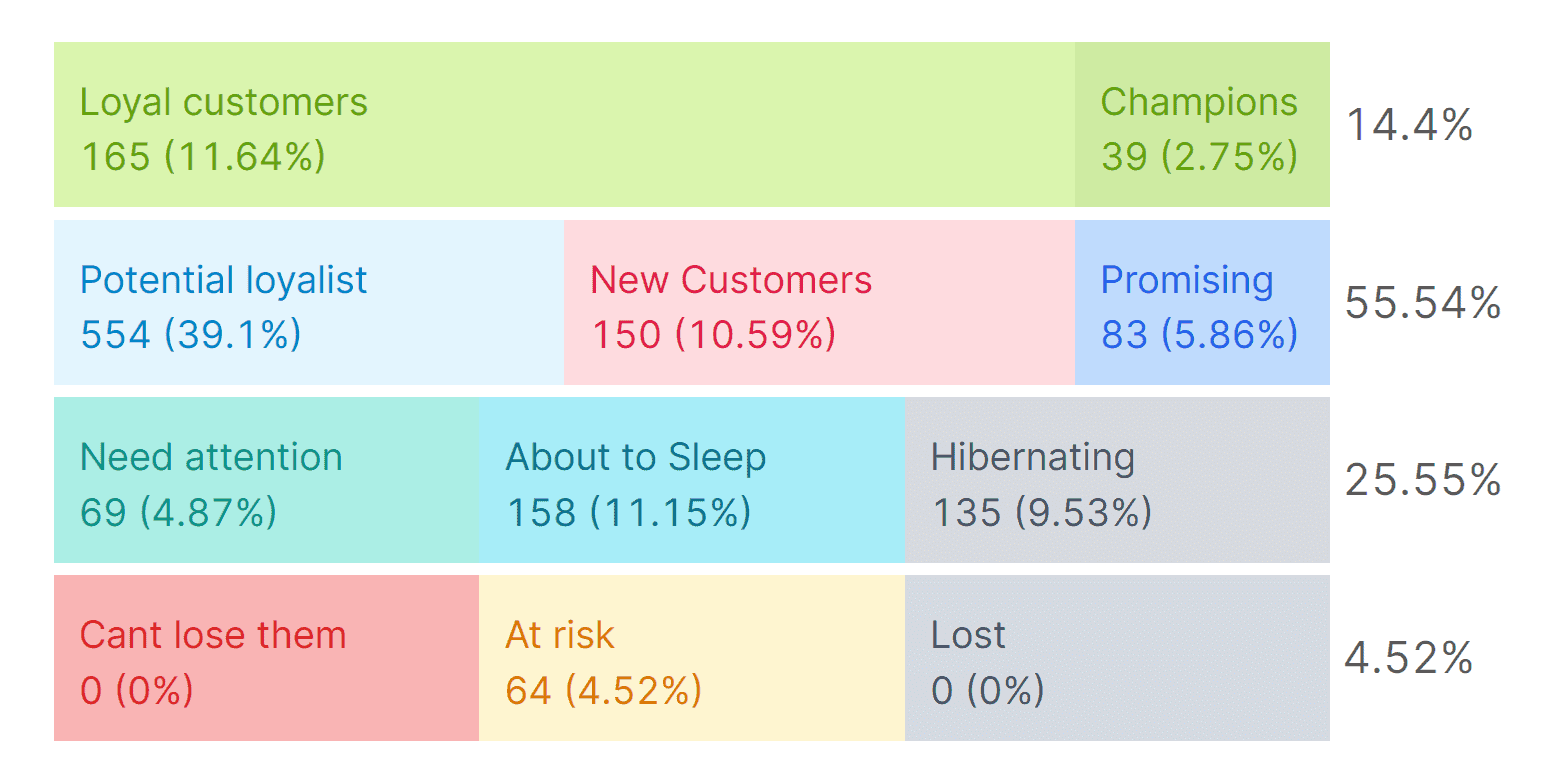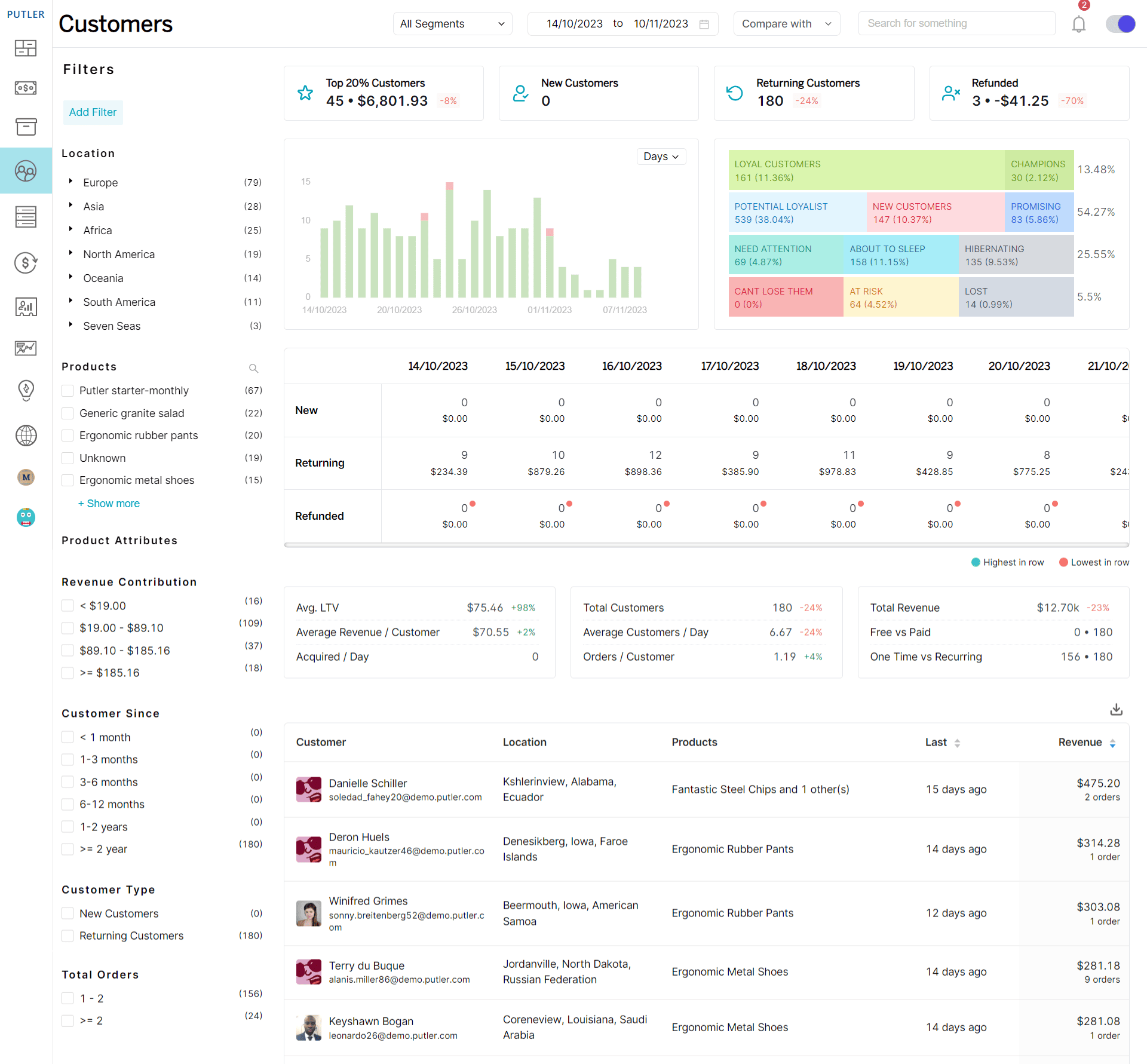Recognizing the need to segment customers for your eCommerce business can be simple. However, most businesses struggle to get accurate reporting and simplify complex data in their everyday business operations.
Most eCommerce customer segmentation issues stem from unorganized or half-baked data analytics, which leads to ineffective campaign generation and low sales.
Effective and accurate customer segmentation helps drive growth, optimize resources, enhance customer segmentation and foster competitive advantages.

Statistics show that 80% of store owners use eCommerce customer segmentation to boost sales. In addition, most companies use analytics tools for data-driven decision-making.
There are a plethora of analytics tools in the WooCommerce Marketplace, you shouldn’t try them all to find the appropriate one. Select an analytics tool that can drill deeper into your complex data and bring out the necessary results whenever you want.
That’s where Putler shines the most. This Woo analytics tool utilizes over 100 business metrics and various eCommerce customer segmentation models for precise reporting.
How does Putler’s powerful eCommerce customer segmentation model benefit your online business?

Data integration from multiple sources
For accurate data analysis, Putler collects data from over 17 sources. They include payment gateways, shopping carts, eCommerce systems, Google Analytics, email marketing tools and more. Putler intelligently gathers and syncs all data to showcase real-time insights.
Ensure accuracy with real-time insights
Real-time insights include multiple advanced filters in this Woo analytics tool. You can customize reporting by digging deeper into the datasets to comprehend customer behavior.
You can analyze upcoming trends and patterns based on customers’ hobbies, pain points, etc. It gives you updates about total sales prediction, churn rate, past & ongoing refunds, disputes, loyal customers, etc.
Elaborated RFM customer segmentation
RFM stands for Recency (recent purchases by a customer), Frequency (how frequently customers make the purchase) and Monetary (total money the customer has spent).
You learn about your most loyal customers, dormant customers, new ones, potential loyalists, and more. So you can strategize your upcoming marketing campaigns and address customers accordingly.
Dig deeper using dynamic segmentation
Dynamic segmentation allows you to acknowledge how much customers love your products. You can know which product is going well and how much they like to spend on a specific product category.
It also includes their average order value, customer type, revenue, customers’ lifetime, etc. This way, you can build precise and targeted marketing plans to attract more customers and boost sales.
Takeaway
Customer eCommerce segmentation is necessary to thrive in the eCommerce world. The right Woo analytics tool is also essential to evaluate and derive personalized marketing tactics.
With Putler, you will be able to segment customers in multiple ways and get detailed reporting at any given time for any time interval you want.
Besides, Putler is cost-effective and simple. It analyzes data based on customers, products, subscriptions and more to help you adopt the right marketing approach.
